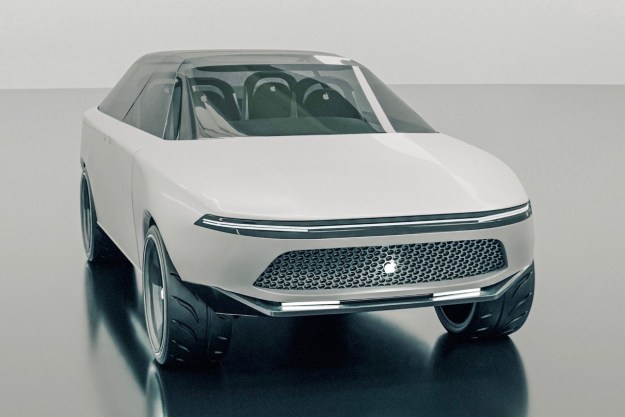An Nvidia executive underscored the company’s agreement with broad statements by Tesla CEO Elon Musk at the EV company’s April 22 Autonomy Investor Day. However, Nvidia’s vice president of investor relations Rob Csongor took exception to what he termed were inaccuracies about Nvidia’s self-driving car SoC (System-on-Chip) in Tesla’s presentation.
Csongor began the blog post on Nvidia’s website with his company’s shared beliefs in with Tesla.
“At Nvidia, we have long believed in the vision Tesla reiterated: Self-driving cars require computers with extraordinary capabilities,” Csongor wrote.
At Tesla’s Palo Alto, California, headquarters, Pete Bannon, Tesla’s head of Autopilot, went into detail about Tesla’s new in-house designed autonomous driving chip. Two of Tesla custom-built A.I. chips will power the computer built into all Tesla models going forward. Each chip has a central processing unit (CPU), a graphics processing unit (GPU), and deep-learning accelerators.
Tesla’s self-driving computer will run deep neural network algorithms based on data from the vehicles’ cameras, radars, and ultrasonic sensors. To perform the requisite heavy lifting, Tesla’s computer is capable of 144 trillion operations per second (TOPS), according to Bannon.
Tesla also announced that it wasn’t stopping but is working on the next-generation chip, which Musk estimated would be approximately three times more powerful than its new chip, the one Bannon introduced.
Musk also said the new chip is better than Nvidia’s Drive Xavier SoC, which Musk stated can theoretically process 21 TOPS.
According to Nvidia’s Csongor, Tesla’s statements about Nvidia’s SoCs are incorrect on at least two levels.
While agreeing with Tesla’s vision that autonomous vehicles require supercomputer-level process, Csongor said, “The Xavier processor features a programmable CPU, GPU, and deep learning accelerators, delivering 30 TOPs. We built a computer called DRIVE AGX Pegasus based on a two-chip solution, pairing Xavier with a powerful GPU to deliver 160 TOPS, and then put two sets of them on the computer, to deliver a total of 320 TOPS.”
So, according to Csongor, not only is the Xavier SoC faster than Musk stated, Xavier is not a stand-alone solution. Nvidia pairs it with a separate high-powered GPU, which boosts the combined performance to 160 TOPS. Nvidia then doubles down with two sets of both chips on a computer called Drive AGX Pegasus for a total of 320 TOPS.
Matching Musk’s promise of an even more powerful next-generation computer on the way, Csongor referred to Nvidia’s Orin SoC processor in development, announced in March 2018 by Nvidia CEO Jensen Huang.
Csongor also made additional corrections to Tesla’s characterization of Nvidia’s self-driving car chipsets, but in the end, according to Csongor, Tesla is raising the bar for all other carmakers.
“Indeed, Tesla sees this approach as so important to the industry’s future that it’s building its future around it. This is the way forward. Every other automaker will need to deliver this level of performance,” Csongor said. “There are only two places where you can get that A.I. computing horsepower: Nvidia and Tesla. And only one of these is an open platform that’s available for the industry to build on.”
Editors' Recommendations
- Tech giant reveals nice price for new EV to take on Tesla
- New Model 3 ‘takes out the baby fat,’ Tesla designer says in new video
- Cruise autonomous vehicle drives over woman just after she was hit by another car
- Volkswagen is launching its own self-driving car testing program in the U.S.
- Autonomous cars confused by San Francisco’s fog





